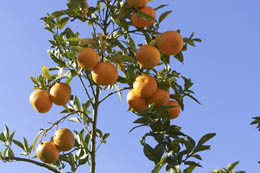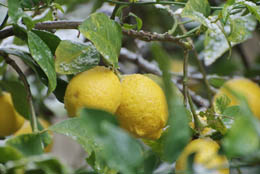10 Fun Facts About Citrus
- By Alexander Scaletta
- Reading Time: 3 mins.
 Once again, we have felt a monumental shift in the weather here in the valley. Pleasantly warm fall days have given way to frosty mornings that turn into short frigid days. Many trees have been stripped bare of their leaves by the harsh north wind and nightly frosts. And we, the residents of the Capay Valley, can be found sitting close to our hearths and wood stoves when we aren’t out tending to fields, picking produce, or packing CSA boxes. Fall is finished. Winter has arrived and with it comes the promise of new and exciting seasonal crops.
Once again, we have felt a monumental shift in the weather here in the valley. Pleasantly warm fall days have given way to frosty mornings that turn into short frigid days. Many trees have been stripped bare of their leaves by the harsh north wind and nightly frosts. And we, the residents of the Capay Valley, can be found sitting close to our hearths and wood stoves when we aren’t out tending to fields, picking produce, or packing CSA boxes. Fall is finished. Winter has arrived and with it comes the promise of new and exciting seasonal crops.
Although we are lamenting the loss of our favorite fall fruits, such as apples, persimmons, and pomegranates, we take solace in the fact that the first citrus of winter has already started ripening (some of which you have had the opportunity to enjoy). So in anticipation of this year’s citrus bounty from the Capay Valley, here are ten facts about citrus that you may not have known.
1. Citrus plants originated in Southeast Asia. Although the exact origins of citrus trees are unknown, it’s believed that they originated in a specific plot of land bordered by northeast India, Myanmar and the Yunnan Provence of China.
2. According to Sunkist, Christopher Columbus brought citrus to the new world on his second voyage there in 1493.
3. The Huffington Post says lemons have many beauty benefits, which include removing acne and blackheads, whitening teeth, strengthening fingernails and even soothing chapped lips.
4. Since we just touched on the topic of beauty, citrus fruits are also high in antioxidants, which are believed to slow the aging process.
5. The vitamins, fiber, and minerals in oranges have important health benefits! According to the SF Gate, the soluble fiber in oranges helps cleanse the body of excess cholesterol. Vitamin C prevents the build-up of free radicals, which have been linked to cancer and heart disease. Vitamin A, which oranges are high in, helps protect the eyes. And potassium helps keep a heart healthy and beating regularly.
Want farm-fresh fruit?
We've got you covered.6. According to Cooking Light magazine, lemons turn from green to yellow based on temperature, not ripeness. So a few green patches on a lemon does not mean that they aren’t deliciously ripe. Many citrus fruits grown in tropical environments stay green.
7. The Meyer Lemon, which is a characterized by a school bus yellow peel and a sweeter less tart flavor, originated in China and is believed to be the product of crossing a mandarin orange with a lemon.
 8. Citrus is extremely frost sensitive. Cold spells and wind leech moisture from the fruit. One way that farmers in the Capay Valley prevent this type of damage is by watering their citrus orchards before a frost. The water then freezes onto the tree and acts as an insulator. It also turns the orchard into a beautiful winter wonderland!
8. Citrus is extremely frost sensitive. Cold spells and wind leech moisture from the fruit. One way that farmers in the Capay Valley prevent this type of damage is by watering their citrus orchards before a frost. The water then freezes onto the tree and acts as an insulator. It also turns the orchard into a beautiful winter wonderland!
9. The technical name for a citrus peel is called a pericarp. It is divided into three parts: the exocarp, which is more commonly know as zest; the mesocarp, which is the white, spongy pith; and the endocarp, which is the pithy left over that clings to the fruit after you remove the peel.
10. Historically, rations of oranges were given to British soldiers on long ocean voyages to prevent scurvy. Scurvy is caused by vitamin C deficiency, so the high vitamin C content in oranges made them perfect for preventing the disease.
Now that you know a little more about this healthy and delicious group of fruits, I hope the experience of eating them is that ten times more enjoyable. Happy Eating!


